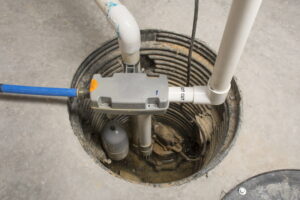
Inspecting your sump pump can be the difference between repairing or replacing it. It’s advised to inspect your sump pump at least once per year, and once after every extreme weather event that causes your sump pump to work harder than normal.
It’s time to check your sump pump. This brief inspection checklist will highlight any issues with your pump so you can decide if it’s a DIY project, or if you need to contact sump pump St. Peters MO professionals to repair it for you.
Steps to Inspect Your Sump Pump
It’s important to inspect every element of your sump pump. This list covers every inspection point you need to focus on.
1. Check the Pit
The pit is the basin that collects water before the pump removes it. Check the width and depth of your pit. It’s recommended to have 18” in width and at least 24” in depth. This gives your pump the capacity to pump without worrying about overflow. Is the pit cracked or worn down? Use PPE such as disposable latex gloves, and inspect the pit for any damages.
2. Inspect the Valve
Sump pumps need a check valve to prevent liquid from backing up into the pump. These can be hard to inspect without the proper tools. Running a test by slowly pouring water around your sump pump and paying attention to how it operates is the first step. If you notice any water backing up, you either have a bigger DIY project on your hands, or you need to contact a professional to replace the check valve.
3. Verify Backup Power Source
If your sump pump uses a battery as a backup power source, find out when it was last replaced. These batteries typically last for up to five years. If you aren’t sure when the battery was last replaced, you can use a multimeter to inspect its voltage. We want to see 12.2V or higher, otherwise, it indicates an issue with the battery and it may need to be replaced upon further testing.
4. Cover Integrity
Your sump pump cover prevents water from evaporating into your basement. If it’s cracked or doesn’t fit properly, lit needs to be replaced. A professional can determine the integrity of the cover seal with certainty.
5. Discharge Location and Hose
Your discharge hose should carry excess water at least 20 feet away from your home. This reduces the risk of water draining back into your home. You should test your sump pump by slowly pouring water around the sump pump until it kicks on. Pay attention to the end of your hose to ensure the water is pumped through completely, and that there are no blocks. One test should be enough to ensure your sump pump is working properly.
Hire a Professional to Inspect Your Sump Pump Today
If you aren’t able to thoroughly inspect your sump pump and verify that everything is working properly, it’s best to contact a professional. Inspection and routine maintenance from a trained professional will save you thousands compared to the home damage that can happen from a dysfunctional pump during extreme weather conditions.
For fast and effective sump pump inspections, repairs, and replacements, contact us today to schedule an appointment.
